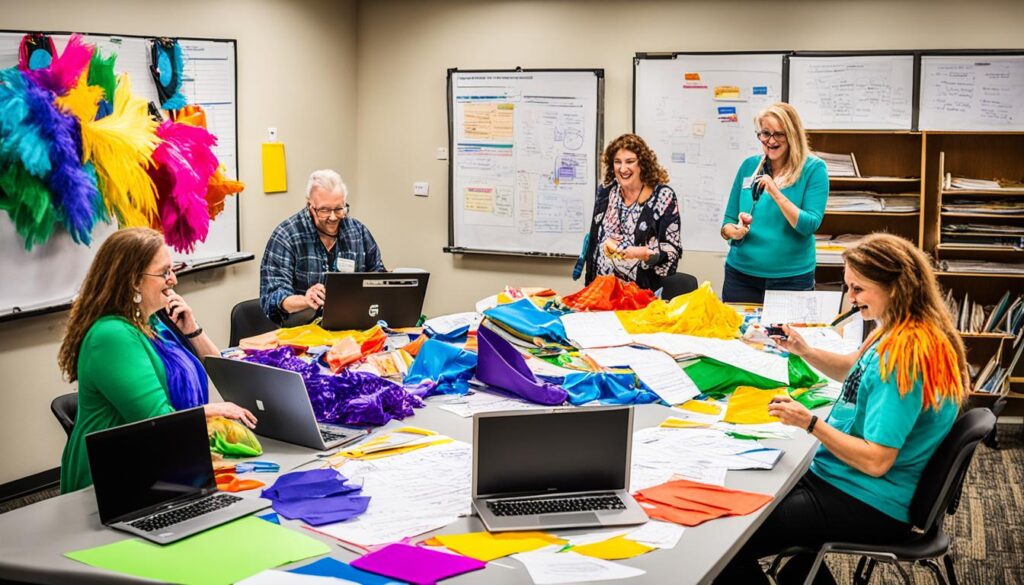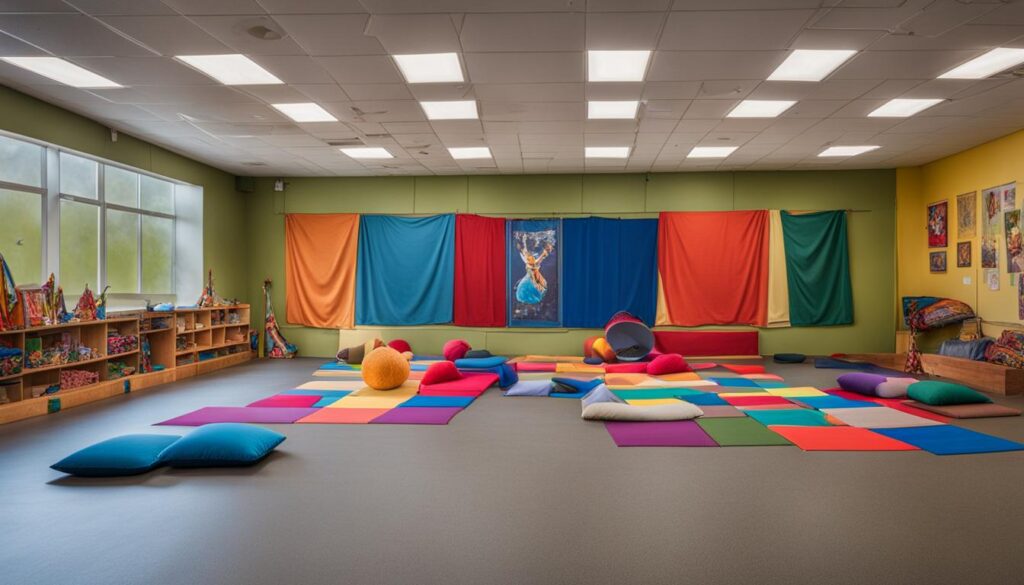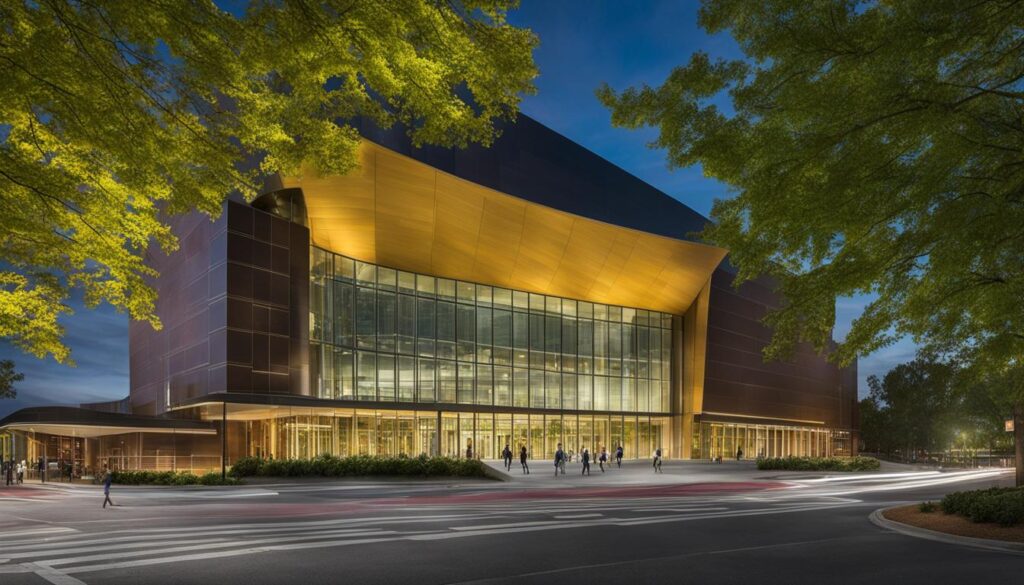Starting a performing arts program for kids can be an exciting and fulfilling endeavor. It not only provides children with the opportunity to explore their artistic talents but also fosters their creativity, self-expression, and confidence. Whether you are passionate about music, theater, dance, or all three, launching a children’s performing arts program requires careful planning and execution. In this article, I will walk you through essential steps and practical tips to help you create a successful kids performing arts program.
How to Start a Performing Arts Program for Kids
- Determine the type of program and curriculum that aligns with your vision.
- Gather necessary resources and hire qualified staff to support the program.
- Establish a strong brand and implement an effective marketing strategy to attract students and their families.
- Set up a physical or virtual space that is safe and accessible for participants.
- Develop a comprehensive curriculum and engaging lesson plans that foster creativity and collaboration.
Determine the Type of Program and Curriculum
When starting a performing arts program for kids, it is essential to determine the type of program you want to offer and develop a curriculum that caters to their needs and interests. Whether you choose to focus on music, theater, dance, or a combination of performing arts disciplines, the curriculum should provide a well-rounded experience that fosters creativity and expression.
To determine the program type, consider the age group you are targeting and their skill levels. This will help you design age-appropriate activities and set appropriate goals for the program. Research the different performing arts disciplines and select the ones that align with your program’s vision and the interest of the target audience.
Designing lesson plans is a crucial part of developing your program’s curriculum. Your lesson plans should incorporate creative and interactive activities that engage the students and encourage their artistic growth. Identify key skills and concepts you want to teach and structure your lessons accordingly. Make sure to include opportunities for students to express themselves and explore their artistic talents.
By determining the type of program and developing a curriculum that includes age-appropriate activities and designing lesson plans that stimulate creativity and expression, you are setting the foundation for a fulfilling and enriching performing arts experience for kids.
Gather Resources and Staff
Securing the necessary resources and hiring qualified staff are crucial steps in ensuring the success of your kids performing arts program. Here are some key strategies to facilitate this process:
- Securing Resources: To acquire the facilities and equipment needed for your program, you can explore securing funding through grants or seek sponsorships from local businesses. This support will provide the necessary resources to create a conducive environment for young artists to thrive.
- Hiring Qualified Staff: Assemble a team of experienced and knowledgeable staff members who specialize in the performing arts. Look for individuals with a passion for working with children and a strong background in their respective disciplines. This will ensure that your program offers high-quality instruction and guidance.
- Finding Facilities and Equipment: Identify suitable facilities that can accommodate your program’s needs. Consider factors such as space, accessibility, and safety. Additionally, gather the necessary equipment and materials required for various performing arts activities, such as musical instruments, dance studios, or theater props.
- Partnering with Local Artists: Collaborate with local artists and performers to enhance the program’s offerings. Artists can contribute by providing workshops, masterclasses, or even participating in performances. This partnership not only enriches the program but also exposes young talents to experienced professionals in their fields.
- Collaborating with Schools or Community Organizations: Forge partnerships with schools or community organizations to expand the reach of your program. This collaboration can involve joint initiatives, performances, or workshops, allowing you to tap into a wider network of potential students and supporters.
By effectively gathering the necessary resources and assembling a qualified staff, you will create a strong foundation for your kids performing arts program. These elements will play a crucial role in providing an enriching experience for young artists, fostering their creativity, and nurturing their passion for the performing arts.


Establish a Brand and Marketing Strategy
Building a strong brand and implementing an effective marketing strategy are crucial for attracting students to your performing arts program. As the founder of a kids performing arts program, it’s essential to create a brand identity that resonates with your target audience and reflects the values and offerings of your program.
Creating a Brand Identity: Start by defining your program’s mission, vision, and unique selling points. Consider the qualities you want to be known for, such as creativity, inclusivity, or innovation. Once you have a clear understanding of your program’s identity, design a logo, choose a color palette, and create consistent visual elements that align with your brand.
Developing a Marketing Plan: A well-thought-out marketing plan will help you reach potential students and their parents. Begin by identifying your target audience and understanding their preferences, needs, and interests. Then, outline your marketing goals and develop strategies to achieve them. This may include online and offline advertising, word-of-mouth referrals, partnerships with local schools or community organizations, and participation in relevant events or exhibitions.
Promoting to Parents and the Community: Parents play a crucial role in enrolling their children in performing arts programs. Tailor your marketing messages to highlight the educational and developmental benefits of your program. Emphasize how your program can nurture creativity, build confidence, and provide a safe and supportive environment for children to explore their artistic talents. Additionally, engage with the community by organizing open houses, performances, or workshops to showcase your program and connect with potential students and their families.
Utilizing Social Media and Online Platforms: In today’s digital age, leveraging social media and online platforms is essential for reaching a wider audience. Create profiles on popular social media platforms such as Facebook, Instagram, and YouTube, and regularly share engaging content related to your program. Consider sharing student success stories, behind-the-scenes glimpses, and highlights of performances or workshops. Engage with your audience by responding to comments and inquiries promptly.
Set Up a Physical or Virtual Space
When starting a kids performing arts program, one of the crucial considerations is setting up the physical or virtual space where the activities will take place. Depending on the program type, you have the option to choose between a physical location or conducting classes and rehearsals online.
If you opt for a physical space, it’s essential to choose a location that is convenient and easily accessible for both students and their families. Look for a space that provides ample room for activities, including studios or rehearsal spaces that can accommodate various performing arts disciplines.


Ensure the physical space is equipped with the necessary facilities and equipment to support the activities you offer. This may include musical instruments, audio-visual systems, dance floors, props, and costumes. The environment should be safe, well-maintained, and conducive to learning and creativity.
Alternatively, if you’re offering online classes, it’s crucial to implement technology that enables seamless virtual interactions. Consider investing in video conferencing software, platform-specific tools, and high-quality audiovisual equipment to provide an immersive experience for your students.
Whatever space you choose, whether physical or virtual, it’s essential to prioritize safety and accessibility. Ensure that the space is compliant with safety regulations and accessibility guidelines, making it inclusive for students of all abilities.
Develop a Curriculum and Lesson Plans
Developing a comprehensive curriculum and lesson plans is crucial for creating a successful performing arts program for kids. As an educator, my goal is to create an engaging and progressive curriculum that caters to various skill levels and areas of interest.
When designing lesson plans, I focus on incorporating skill-building activities that allow students to develop their artistic abilities. I believe in the power of hands-on learning and interactive experiences, as they enhance students’ understanding and appreciation of the performing arts.
One effective way to foster creativity and collaboration among students is to include group projects and ensemble activities in the lesson plans. This encourages students to work together, share ideas, and learn from each other’s strengths.
For example, I often design lessons where students have the opportunity to create their own performances or showcase their talents in small groups. This not only cultivates their creativity but also instills a sense of teamwork and cooperation.
In addition, I incorporate skill-building exercises into the curriculum to help students develop their technical abilities. Whether it’s practicing vocal warm-ups, mastering dance techniques, or refining acting skills, these exercises provide a solid foundation for their artistic growth.
To ensure that the curriculum remains engaging and relevant, I regularly assess and update the content. This allows me to adapt to the evolving interests and needs of the students, ensuring they receive a dynamic and enriching learning experience.
By creating an engaging and progressive curriculum and designing thoughtfully crafted lesson plans, I strive to inspire and empower young artists, nurturing their passion for the performing arts.
Conclusion
Starting a performing arts program for kids is a fantastic way to nurture their creativity, foster their talent, and encourage self-expression. By following the steps outlined in this article, you can lay a solid foundation for a thriving and successful children’s performing arts program.
Embrace the opportunity to inspire and empower young artists, enriching their lives through the performing arts. Whether you’re starting a kids arts program, a children’s theater program, or any other type of performing arts program for kids, the benefits are undeniable.
By providing a space where children can explore their creativity, learn valuable skills, and express themselves, you are helping to shape their future. Don’t underestimate the impact that a performing arts program can have on a child’s life. So go ahead, start your journey and create a nurturing environment where young talents can shine.
FAQ
How do I determine the type of performing arts program and develop a curriculum?
Start by considering the performing arts disciplines you want to offer, such as music, theater, or dance. Create age-appropriate activities and design lesson plans that encourage creativity and self-expression.
What resources and staff do I need for a kids performing arts program?
You’ll need to secure funding or sponsorships for facilities and equipment. Hire qualified staff who have experience in the performing arts. Consider partnering with local artists or collaborating with schools or community organizations.
How can I establish a brand and create an effective marketing strategy for my program?
Develop a brand identity that represents your program’s values and offerings. Create a marketing plan to promote the program to parents and the community. Utilize social media and online platforms to reach a wider audience.
Should I set up a physical or virtual space for my kids performing arts program?
It depends on your program type. Choose a convenient and accessible location for in-person programs and ensure the space has appropriate facilities. For virtual programs, implement technology that enables seamless virtual interactions.
How do I develop a comprehensive curriculum and lesson plans for a kids performing arts program?
Create an engaging and progressive curriculum that covers various skill levels and areas of interest. Design lesson plans with interactive and hands-on activities to enhance learning. Incorporate skill-building exercises, foster creativity, and encourage collaboration among students.
What are the benefits of starting a performing arts program for kids?
Starting a kids performing arts program can nurture creativity, foster talent, and promote self-expression in children. It provides an opportunity to inspire and empower young artists through the performing arts.

